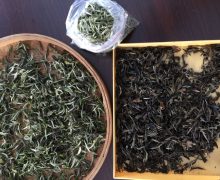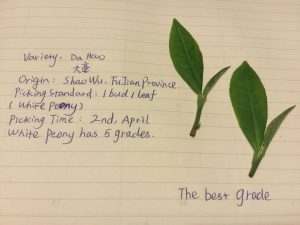Can We Take the American ‘Tea Industry” Seriously?
I’m back from a great trip to China. As usual it is a very inspiring experience for me. China is what tea is all about, and nowhere outside of China is tea being produced that is even in the same league as Chinese tea. Sitting on my desk when I returned was a copy of the latest ‘Tea and Coffee’ magazine. This, of course, is our esteemed trade journal. It is remarkable the level of tea knowledge published the by industry experts, like the gem “White Tea Defined By Industry” (Unfortunately, they’ve made the article restricted to subscribers only). I don’t want to go through the article and point out the mistakes, but I do want to say that the American Tea Industry will continue to have very little credibility until it goes to China and starts to study tea. One can not have a meaningful understanding of tea and tea culture without making a significant investment into learning from Chinese experts. It might be a good idea to learn to speak a little Chinese. If I was in the wine business, I think I would like to know a little French. The international tea business has never had good information about tea, because until recently the Chinese would not tell them. Now the current international experts are in the uncomfortable position of admitting that they are not experts after all. I do want to say a little bit about some of the substance of the piece.
The Outdated Confusion Surrounding White Tea

The tea from the Da Bai (translation, “big white”) Bush which produces what we know in the US as white tea was, in fact, written about in China as for back as 1100 years ago, as green tea. However, white tea was not produced by this bush until the late 1700’s. At that time, it was primarily used as an herb for treating measles and other skin rashes. It has never been particularly rare, nor has it ever been one of the world’s most expensive tea. It is true that all bud tea brings a premium, but Da Bai Cha bushes are plentiful in north east Fujian. The best quality is produced in the Fuding area. If it is hard to get now, it is because the majority of the bud crop is used for green tea. The Da Bai Cha green tea is well liked and brings a good price in the domestic market, while about 80% of the white tea goes to export.

There is however a legendary tea called Bai Cha (white tea) produced in Anji in Zhejiang province which is extremely rare and very expensive, and this is the tea mentioned as such in the old Chinese literature. It is not, however, in the white tea category. Rather, it is a green tea. Anji is in the same area where Lu Yu wrote his famous book about tea during the Tang Dynasty. It is confusing that it is named Bai Cha (white tea), but it also underlines the level of research being done here. There are no Chinese tea experts that would make this mistake. The people being affected by these mistakes are the unfortunate consumers. The article is correct in its assertion that white tea can be grown anywhere, as can green, black, oolong, or any other category, at least technically. (Had any good African oolong lately?) As the failing plantation system outside of China and Japan struggles to survive by trying to add some varieties in hopes of competing with the remarkable Chinese teas that are leaking slowly into the market, we are likely to see increasingly more definitions like this one. I think as more factual information also leaks out of China and consumers become more informed, these folks will be forced to go to China and do some real research before having the nerve to start defining Chinese tea in such a way as to legitimize a bankrupt (at least for quality, certainly not for money) industry.
Austin
